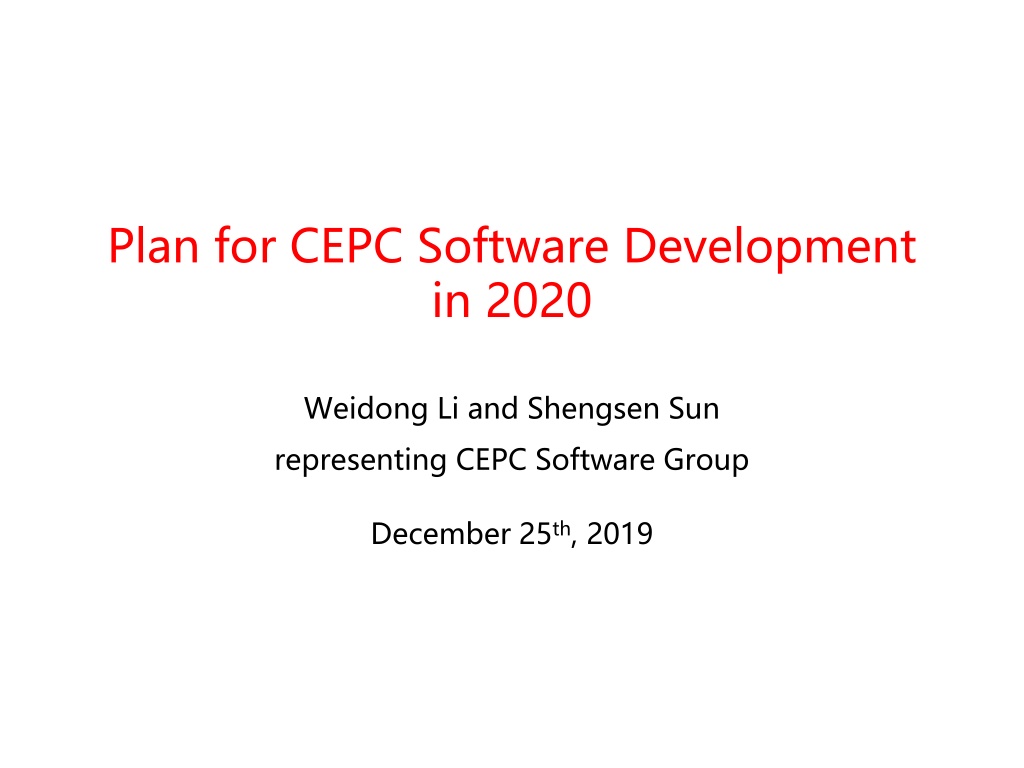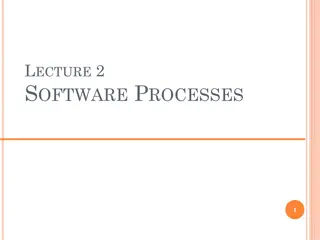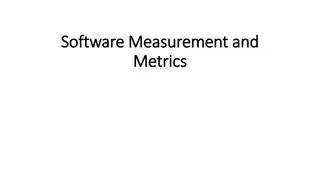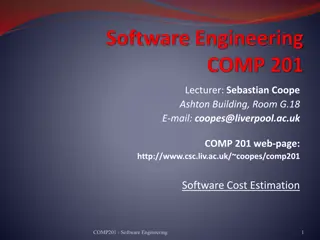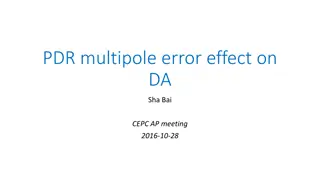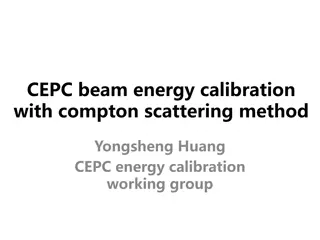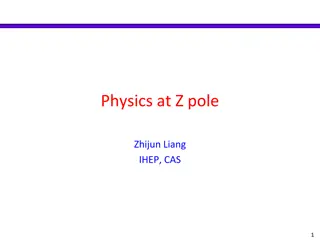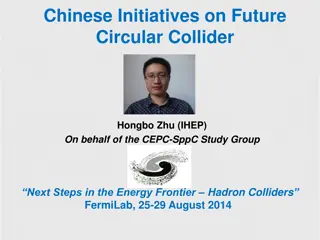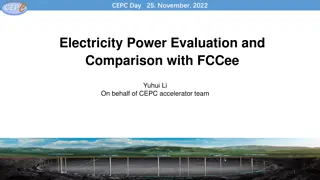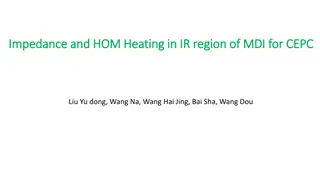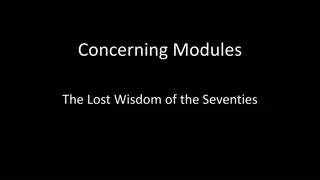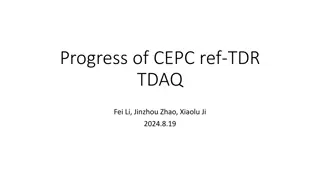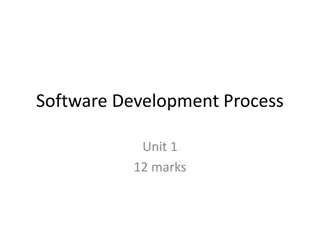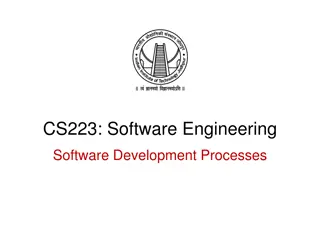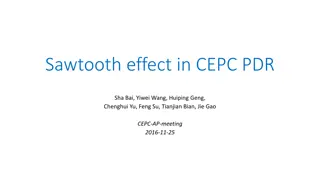Plan for CEPC Software Development in 2020
Software environment requirements include gcc, cmake, boost, ROOT, TensorFlow, and multi-threaded Gaudi. Association relationships in EDM and plans for event navigation are addressed. Porting tracking algorithms from Marlin to CEPCSW is discussed, along with migration algorithms and validation plans for tracking in CEPC. Long-term usage of ACTS for CECP tracking is emphasized.
Uploaded on Feb 17, 2025 | 0 Views
Download Presentation

Please find below an Image/Link to download the presentation.
The content on the website is provided AS IS for your information and personal use only. It may not be sold, licensed, or shared on other websites without obtaining consent from the author.If you encounter any issues during the download, it is possible that the publisher has removed the file from their server.
You are allowed to download the files provided on this website for personal or commercial use, subject to the condition that they are used lawfully. All files are the property of their respective owners.
The content on the website is provided AS IS for your information and personal use only. It may not be sold, licensed, or shared on other websites without obtaining consent from the author.
E N D
Presentation Transcript
Plan for CEPC Software Development in 2020 Weidong Li and Shengsen Sun representing CEPC Software Group December 25th, 2019
Software Environment Requirements from ACTS: gcc (>= 6.2), cmake (>=3.7), boost (>=1.62), ROOT (>=6.10) Requirements from TensorFlow and multi-threaded Gaudi TensorFlow: gcc >= 8 Gaudi v32.0: gcc >=7 Plan to move from LCG_94 to LCG_96b Current LCG_94 6.2.0 2.28 3.8.1 1.66.0 6.14.04 v29r2 Update LCG_96b (latest) 8.3.0 2.30 3.8.1 1.77.0 6.18.04 32.0 LCG gcc binutils cmake Boost ROOT Gaudi 2
Association Relationships in EDM Association TrackerHit SimTrackerHit CalorimeterHit SimCalorimeterHit ReconstructedParticle MCParticle Aggregation A subtype of association relationship In our case, upstream objects can access their own downstream objects: ReconstructedParticle Track TrackerHit TrackerPulse 3
Plan for Event Navigation Requirements to Event Navigation Needed by digitization algorithms and tracking algorithms for performance evaluation particularly in the development stage Problems with PLCIO Object IDs are used in Association and Aggregation Not straightforward to retrieve an object with its Object ID Plan Develop helper classes or Gaudi services to facilitate event navigation between TrackerHit and SimTrackerHit CalorimeterHit and SimCalorimeterHit ReconstructedParticle and MCParticle 4
Porting tracking algorithm Tracking process (Marlin) SiliconTracking_MarlinTrk TrackSubsetProcessor FullLDCTracking_MarlinTrk ForwardTracking ClupatraProcessor SiliconTracking_MarlinTrk is chosen as the first migrated reconstruction, since it has less dependency and the tracking for silicon detector is more simple than TPC. SiliconTracking process Pixel SimTrackerHit Digitization SpacePointBuilder SiliconTracking Strip SpacePoint (TrackerHit) TrackerHit Track SiliconTracking for vertex detector (pixel VXD) only (without strip SIT) is most simple option.
Plans for tracking algorithms Migration algorithms from Marlin to CEPCSW and Validation Tracker Full Silicon Fu Chengdong TPC Zhang Yao / Zhao Mingrui PFA Arbor Ruan Manqi, ... Pandora Guo Fangyi, Li Gang, Jet / Flavor Li Gang, Validation: Time consumption, manpower, computing resource ACTS: A Common Tracking Software Benefit from software upgrade projects for international experiments Long term using ACTS as CECP tracking (track finding) FATRAS: an option of tracker fast simulation tool for CEPC
Fast Simulation Three types of simulation Full simulation (Geant4) O(1) Fast simulation O(1/100) Parametric simulation O(1/1000) Plan to develop a coherent simulation framework Allow mixing of full and fast simulations when a particle enters a certain detector region, user-defined simulation tool will be used. Fast simulation tool development plan Tracker: hit level fast simulation ATLAS ISF (Integrated Simulation Framework) Calorimeter: frozen showers, GAN 7
Calorimeter Simulation with GAN (1) Full simulation with Geant4 : The most accurate approach, but also the most computationally intensive. Computing time scales roughly linearly with both the incident particle energy and the number of incident particles. Calorimeter simulation is one of bottlenecks. Simulation with Generative Adversarial Networks (GAN) is one of fast simulation methods Current status: Trained GAN for electron and photon using particle gun samples. Checked its performance using e+e Z( )H( ) mc samples. Compared some properties of reconstructed gamma from Geant4 and GAN. M E of Leading ??? E of Sub-Leading ??? 8 Looks fine, has room for improvement.
Calorimeter Simulation with GAN (2) In general, the results from GAN looks good and shows its potential for fast calorimeter simulation. There is still lots of work need to be done and our plan is as follows: Optimization of GAN architecture, initial parameters including hyper parameters to improve its performance More performance studies like energy scale, resolution, identification and isolation variables. Combine ECAL and HCAL in GAN simulation. Training with other data samples like ?, k and so on. 9
Plan for Multi-threading Testing Framework Testing Update Gaudi to the latest version of V32.0 Detector simulation chosen to be Multi-threaded application Testing of Event Store To check whether it is thread-safe or not Event Data IO Testing Data synchronization and performance measurements Performance optimization 10
Thank You ! 11
